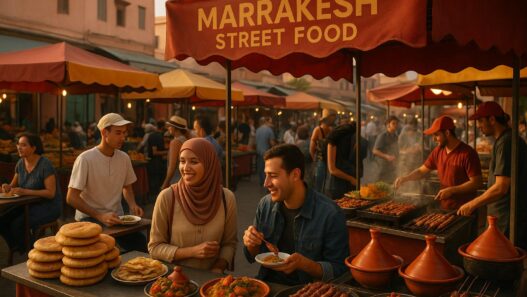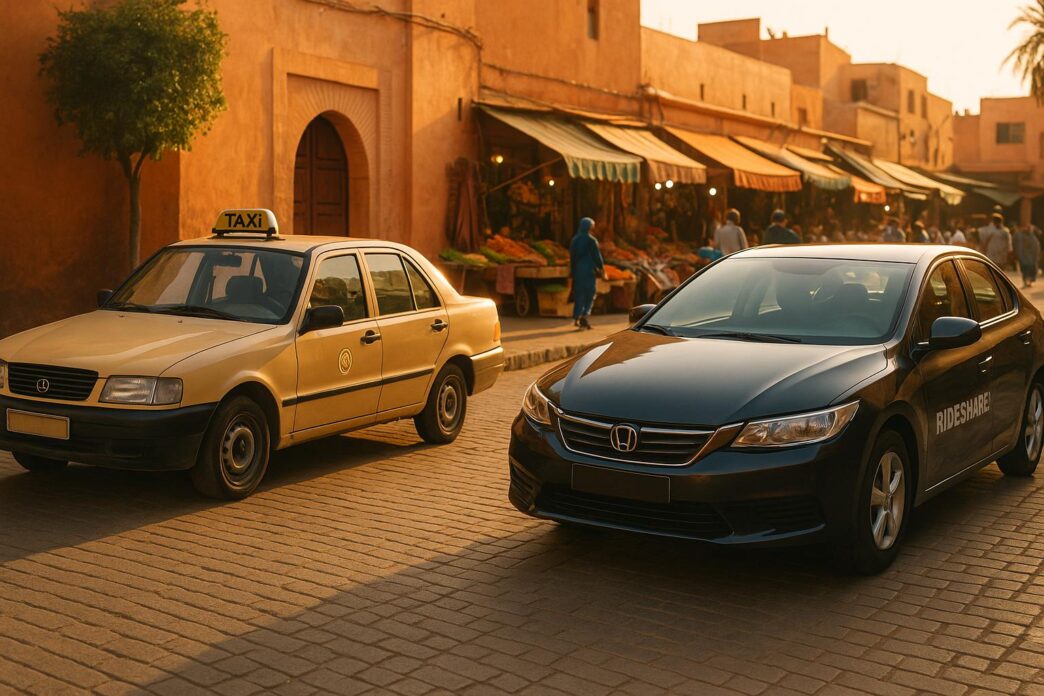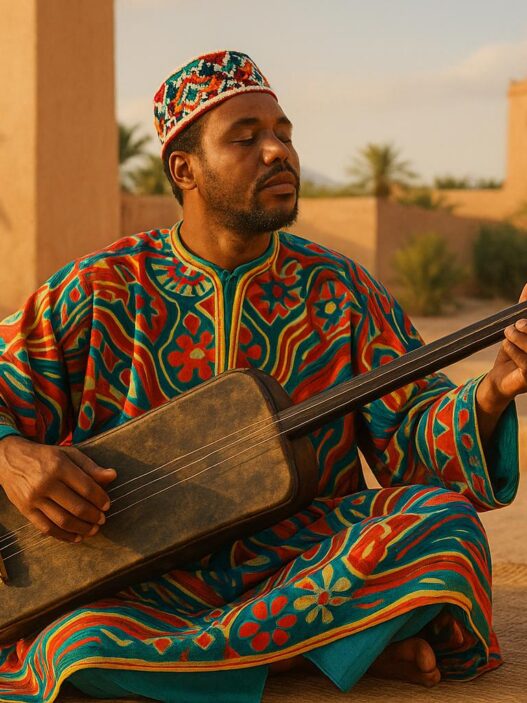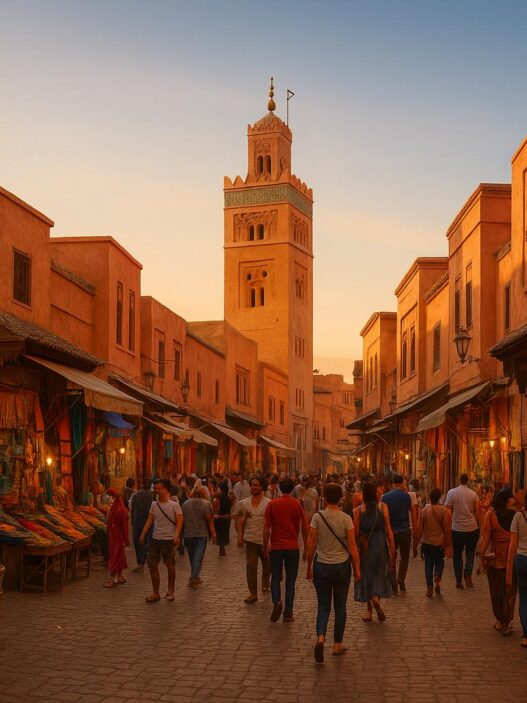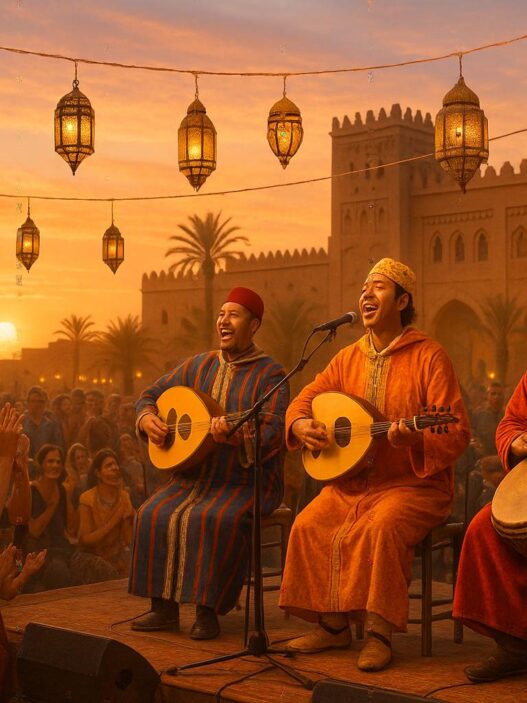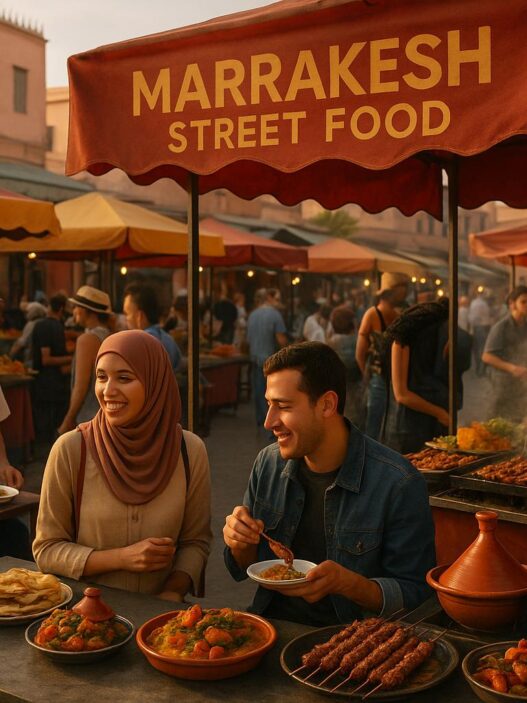Getting around Marrakesh boils down to two main options: taxis and ride-sharing apps. Here’s a quick breakdown:
- Taxis: Petit taxis are cheaper for short trips (starting at $0.70 during the day, $1 at night) but require negotiation or meter checks. Grand taxis are better for longer routes but cost more (up to $15 within city limits). Payment is cash-only, and language barriers can make communication tricky.
- Ride-Sharing Apps: Services like InDriver, Heetch, and Yassir offer transparent pricing, cashless payments, and safety features. Short trips cost $2–$3 during the day, with higher rates at night. Apps are ideal for airport transfers and travelers who prefer avoiding fare negotiations.
Each option has pros and cons. Taxis are quick and easy to hail, while ride-sharing apps provide convenience and upfront pricing. Your choice depends on your budget, comfort with negotiation, and travel needs.
Quick Comparison
| Aspect | Taxis | Ride-Sharing Apps |
|---|---|---|
| Cost | $0.70–$15 (negotiated or metered) | $2–$3 (day), up to 50% more at night |
| Payment | Cash only | Cash or digital |
| Language | Arabic/French helpful | App in English |
| Booking | Street hailing | App-based |
| Safety | Varies, no GPS tracking | GPS tracking and driver verification |
Choose taxis for short, quick trips or when internet access is limited. Opt for ride-sharing apps for longer distances, airport transfers, or added safety features.
Transportation Options in Marrakesh
Marrakesh provides travelers with two main ways to navigate the city: traditional taxis and modern ride-sharing services. Let’s explore what each option offers and how they differ in terms of cost.
Ride-Sharing Services
The ride-sharing landscape in Marrakesh has seen notable changes since Uber exited Morocco in 2018. Today, several apps compete for users, with inDrive holding a commanding 96% market share. This app stands out by allowing passengers to propose their own fares, though it operates in a somewhat unclear regulatory space. Reports suggest that tensions occasionally arise between ride-sharing drivers and traditional taxi operators.
Other options include Heetch and Yassir, with Yassir aiming to broaden its services to cover not just ride-hailing but also food delivery. Another player, Roby, works exclusively with registered Moroccan taxis, adhering to government-regulated pricing. Despite the variety of apps available, only about 18% of Moroccans use ride-sharing services. However, those who do often favor them over traditional taxis.
Taxis
Traditional taxis remain a cornerstone of Marrakesh’s transportation system, offering a reliable and familiar way to get around. The city’s taxi network includes approximately 5,000 yellow cabs, which are divided into two main categories:
- Petit taxis: These small yellow cars are a common sight across Marrakesh. They can carry up to three passengers and operate exclusively within city limits. Equipped with meters, they are especially easy to find in popular tourist areas. Fares typically start at 7 dirhams (about $0.60), with an additional charge of roughly 2.5 dirhams (around $0.25) per kilometer.
- Grand taxis: Larger than petit taxis, these vehicles can accommodate up to six passengers and primarily serve intercity routes, connecting Marrakesh to nearby towns and cities.
Recognizing the need for modernization, the government has been working to improve the taxi sector. Interior Minister Abdelouafi Laftit noted:
"The current taxi system is no longer sustainable and must be developed to meet the challenges."
Traditional taxis are particularly useful for nighttime travel when public transportation options are limited, or during bad weather when reliability becomes crucial. However, they can face challenges like traffic jams and restricted car access in certain tourist-heavy areas, such as the Medina. Up next, we’ll dive into how the costs of these two transportation options compare.
Cost Comparison: Ride-Sharing vs. Taxis
When navigating Marrakesh, understanding the cost differences between ride-sharing services and traditional taxis can help you stick to your budget. Each option comes with its own pricing structure and benefits, depending on your travel needs.
Pricing and Fare Breakdown
Petit taxis operate with regulated meters. During the day (6:00 AM–8:00 PM), fares start at 7 MAD ($0.70), with an additional 2 MAD ($0.20) per kilometer. At night, the base fare increases to 10 MAD and the cost per kilometer rises to 4.20 MAD, plus an extra 1 MAD ($0.10) per minute of waiting time.
Grand taxis, on the other hand, rely on fixed rates that are negotiated before the trip begins. For travel within Marrakesh city limits, you shouldn’t pay more than 150 MAD ($15.00).
Ride-sharing apps offer a different model, where fares are proposed and adjusted based on driver acceptance. Short daytime trips within neighborhoods typically range between 20–30 MAD, but prices can increase by up to 50% at night. For airport transfers, ride-sharing services generally charge a fixed rate of 150 MAD.
Keep in mind that additional fees, such as service charges for Taxi Vert or fees for heavy luggage, might apply. These pricing differences and surcharges can influence how payments are handled.
Payment Methods and Price Negotiations
Petit taxis primarily accept cash in Moroccan dirhams, so it’s a good idea to carry small bills. Drivers may claim they don’t have change for larger denominations. Always ensure the meter is running to avoid overpaying.
Grand taxis require upfront negotiations since they don’t use meters. Agreeing on the fare before starting your journey is key to avoiding misunderstandings.
Ride-sharing apps provide more flexibility in payment options, supporting both cash and digital payments through the app. Their fare proposal system gives you more control, but it’s helpful to have a sense of local pricing to avoid overpaying.
No matter which option you choose, clear communication and polite negotiation can go a long way in ensuring a fair price and a smooth ride through Marrakesh.
Convenience and User Experience
Getting around Marrakesh is a mix of traditional taxis and ride-sharing apps, each offering its own set of perks and challenges. While pricing plays a role, the overall experience can vary significantly depending on your choice.
Availability and Booking
In Marrakesh, traditional taxis are hard to miss. Petit taxis regularly roam the streets, with drivers sometimes honking to signal availability. You’ll also find taxi stands scattered across the city, making it easy to grab a ride without much planning. However, during peak times or in certain locations, finding an available taxi can be more challenging.
If you’re heading into the medina, keep in mind that taxis can only drop you off at designated entry points, so you’ll need to walk a bit to reach your destination.
On the other hand, ride-sharing apps like InDriver, Roby, Heetch, and Yassir have entered the scene, offering a more tech-driven alternative. Booking through these apps requires a smartphone and internet access, which is convenient given the widespread use of mobile technology. With ride-sharing, you avoid the hassle of hailing a taxi on the street, and the apps provide upfront pricing, eliminating the need to negotiate fares. Some travelers even book rides ahead of time for peace of mind.
Once your ride is arranged, safety and communication become key considerations.
Safety and Language Barriers
Traditional taxis have their quirks. Overcharging is a common issue, so it’s wise to confirm fares before starting your trip. Language barriers can also complicate things, as not all taxi drivers speak English. Writing down your destination in Arabic or French can help, and having your hotel’s address in Arabic or using a map app to show your location can make the process smoother .
For added security, especially for solo travelers or women, consider booking a licensed taxi through your riad. These drivers often speak English, and fares are agreed upon in advance. Sitting in the back seat and traveling during daylight hours are also recommended for extra peace of mind.
Ride-sharing apps address many of these concerns with built-in safety features. Always double-check that the driver and car match the details provided in the app, and use features like GPS tracking, driver photos, and license plate verification to ensure a secure ride. However, be aware that some ride-sharing services operate in a regulatory gray area in Morocco.
Pros and Cons Summary
| Aspect | Traditional Taxis | Ride-Sharing Apps |
|---|---|---|
| Availability | Easily found on streets and at taxi stands | Requires a smartphone and app |
| Booking | Instant street hailing, no planning needed | App-based booking, may involve a short wait |
| Language | Knowing Arabic or French is helpful | App interface in English, minimal interaction |
| Safety | Licensed drivers; ID sometimes visible | Driver verification and GPS tracking |
| Payment | Cash only; fares may be metered or negotiated | Fixed rates; cash or digital options |
| Medina Access | Drop-offs at entry points only | Same limitations as taxis |
| Peak Hours | Harder to find during busy times | Generally more reliable availability |
| Pricing | Metered or negotiated fares | Transparent, fixed pricing upfront |
sbb-itb-fa26f1f
Tips for Tourists: Choosing the Best Option
Making the most of your travel budget in Marrakesh often comes down to how you get around. Deciding between ride-sharing apps and traditional taxis depends on your priorities, comfort level, and specific travel needs. Each option has its perks, and knowing when to choose one over the other can save you money and headaches.
When to Choose Ride-Sharing
Ride-sharing apps like InDriver and Heetch are great for travelers who want transparent, upfront pricing. These apps show you the cost of your trip before you even get in the car, which is a relief for English-speaking tourists who might not feel comfortable negotiating fares in a foreign language.
- Airport transfers: Booking through an app helps avoid the inflated rates that tourists sometimes face at Marrakech Airport. Plus, you’ll get a verified driver and a set price, so there are no surprises.
- Night travel: With built-in GPS tracking and driver verification, ride-sharing apps offer an added layer of safety – especially helpful if you’re not fluent in Arabic or French.
- Group travel or luggage: Need extra space? You can request larger vehicles through the app, ensuring the driver is prepared for your needs.
In fact, 76% of ride-sharing app users say they value the clear pricing these services offer. But if apps don’t suit your situation, taxis come with their own advantages.
When to Choose Taxis
For short trips within the city center, traditional petit taxis are often the fastest and easiest option. These quick rides typically cost no more than 10 dirhams (about $1) and can be hailed directly from the street – no app or internet required.
- Longer trips with negotiation: If you’re comfortable speaking Arabic or French and know the average fares, you might secure a better deal by negotiating directly with the driver.
- Immediate availability: During peak hours or in areas where ride-sharing coverage is limited, taxis are often more convenient. You won’t have to worry about your phone’s battery or finding a stable internet connection.
- Multiple stops: Planning to shop or sightsee with several stops along the way? Taxis can be more economical for this kind of trip, as you can negotiate a flat rate for the entire journey.
Tipping and Local Customs
Tipping is a common practice in Morocco, especially for longer rides or when the driver helps with your luggage. A good rule of thumb is to tip around 10% of the fare.
- For short rides, simply round up the fare (e.g., 7.50 MAD to 8 MAD).
- On longer trips, like a 50 MAD ride, adding 5 MAD as a tip is a nice gesture.
Having small denominations of Moroccan Dirhams on hand makes tipping easier and avoids awkward moments when change is needed. Whether you’re using a taxi or a ride-sharing app, a little courtesy goes a long way. A friendly “shukran” (thank you) in Arabic or “merci” in French, along with a smile, shows respect for local customs.
Ultimately, both taxis and ride-sharing services have their place in Marrakesh. By understanding when to use each, you can make your travels smoother and more enjoyable.
Conclusion
When weighing costs, payment options, and overall experience, both ride-sharing apps and traditional taxis in Marrakesh serve distinct purposes. Deciding between the two doesn’t have to be overwhelming – each option has its own strengths that can help you save money and reduce travel stress.
Ride-sharing apps stand out for their transparent pricing, driver ratings, and reliable fare estimates, making them a great choice for airport transfers or late-night rides. They eliminate the need for fare negotiations, offering peace of mind to travelers who prefer predictable costs and accountability.
On the other hand, traditional petit taxis are a practical option for short trips around the city center. With base fares starting at approximately 7–10 MAD ($0.70–$1.00), they’re often the quickest way to get from one neighborhood to another. To make the most of petit taxis, it’s essential to agree on a fair price before the ride begins.
Ultimately, the best choice depends on your travel priorities. If you’re carrying luggage or traveling longer distances, ride-sharing apps provide a hassle-free experience. For short, local trips, petit taxis can be a more budget-friendly option – provided you’re comfortable with a bit of negotiation and familiar with local practices.
The key to navigating Marrakesh efficiently is staying flexible. Use ride-sharing apps for convenience and certainty, and turn to petit taxis for quick, economical rides when you’re comfortable with the local system. This balanced approach ensures you can explore the city with ease, no matter your budget.
FAQs
How do ride-sharing apps in Marrakesh ensure safety compared to traditional taxis?
Ride-sharing apps in Marrakesh come with built-in safety features that make them stand out compared to traditional taxis. For instance, GPS tracking ensures your journey is monitored in real-time, and you can share your trip details with friends or family for extra reassurance. Plus, drivers on these platforms typically undergo background checks, and you can check their ratings and reviews before booking a ride.
On the other hand, while traditional taxis are easy to find, they don’t always offer the same level of transparency or safety tools. To avoid any confusion, it’s smart to agree on the fare beforehand or make sure the meter is being used. Both options can be safe if you stay mindful, but ride-sharing apps often come equipped with more advanced safety measures for travelers.
Is ride-sharing more expensive at night in Marrakesh compared to daytime?
Yes, ride-sharing services in Marrakesh tend to cost more at night. During daytime hours, fares usually hover around 100 MAD ($10 USD). However, after 8:00 or 9:00 PM, rates often rise to about 120 MAD ($12 USD). This increase is due to higher demand and fewer drivers available during the evening.
Should I use a ride-sharing app or a petit taxi for my airport transfer in Marrakesh?
When choosing between a ride-sharing app and a petit taxi for your airport transfer in Marrakesh, it’s important to weigh cost, convenience, and availability. Petit taxis are usually the cheaper option and are often easy to spot around the city. However, they operate on meters, which means the final price can vary depending on traffic or the route taken. Plus, local rules might restrict their availability for airport pick-ups.
On the other hand, ride-sharing apps like Uber or Careem offer features like cashless payments, real-time tracking, and safety measures, which many travelers find appealing. That said, these services may charge slightly higher fares and might not always be available for airport transfers. Deciding between the two comes down to whether you value saving money or a more seamless experience.



